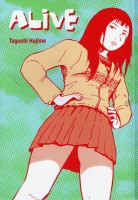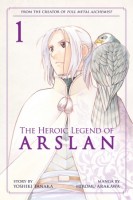My News and Reviews
Last week at Experiments in Manga, the Yona of the Dawn Giveaway Winner was announced. The post also includes a list of a variety of shoujo fantasy manga available in English that have compelling female leads. That was about it from me last week other than the usual My Week in Manga post, but I am currently working on a feature for Ichigo Takano’s Orange and a review of Are You an Echo?: The Lost Poetry of Misuzu Kaneko which I should hopefully be ready to share soon.
In licensing news, Viz Media will be releasing Yuhta Nishio’s After Hours yuri manga and has announced the acquisition of Sui Ishida’s Tokyo Ghoul:Re, Matsuri Hino’s Vampire Knight Memories, and Satoru Noda’s Golden Kamuy (which is the one I’m most interested in). Kodansha Comics announced a whole slew of licenses at New York Comic Con: Regarding My Reincarnation as a Slime by Fuse, Fairy Tail: Rhodonite by Shibano Kyouta, Kigurumi Defense Squad by Lily Hoshino, Kiss Me at the Stroke of Midnight by Rin Mikimoto, Waiting for Spring by Anashin, Love and Lies by Musawo Tsumugi, Ahogaru: Clueless Girl by Hiroyuki, Wake Up, Sleeping Beauty by Mei Morino, Frau Faust by Kore Yamazaki (the creator of The Ancient Magus’ Bride, so I’ll definitely be trying the series), and Land of the Lustrous by Haruko Ichikawa.
As for Kickstarter projects, Digital Manga announced that Under the Air and The Crater will be part of it’s upcoming Osamu Tezuka project, though I’m not sure when that will actually take place. As for a few projects that are currently underway that have caught my eye there’s the contemporary comics essay zine Critical Chips, the Johnny Wander omnibus Our Cats Are More Famous Than Us, and the second volume of O Human Star, which is a fantastic science fiction comic with queer themes.
Quick Takes
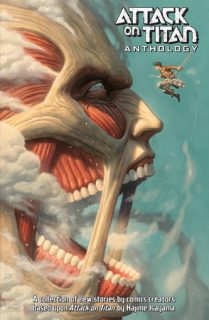 Attack on Titan Anthology edited by Ben Applegate and Jeanine Schaefer. While I wouldn’t consider myself to be a diehard of Hajime Isayama’s Attack on Titan, I do largely enjoy the series. One of the things that I actually find most interesting about the series is how it has become a worldwide phenomenon. Attack on Titan Anthology is a prime example of that, bringing together works by numerous Western comics creators which explore the world and characters of Isayama’s original Attack on Titan. There are some pretty big names among the contributors from both mainstream and independent comics. The result is spectacular and even better than I expected. I love the variety found in the works included in Attack on Titan Anthology. The stories range from darkly comedic to deadly serious (Asaf and Tomer Hanuka’s “Memory Maze” actually almost made me cry), and each work is different from the others in both style and tone. Some take place directly in the world that Isayama has created while others parody or completely reimagine it. Attack on Titan is an exciting and engaging collection. As someone who is a fan of both Western and Japanese comics, I greatly enjoyed seeing some of my favorite creators tackle Attack on Titan in their own unique ways. I suspect the anthology will appeal most to people who are already familiar with Attack on Titan, but others might be drawn to it simply due to the specific creators involved. Either way, Attack on Titan Anthology is simply fantastic. The volume’s production-quality is probably the best that I’ve seen from Kodansha Comics, too.
Attack on Titan Anthology edited by Ben Applegate and Jeanine Schaefer. While I wouldn’t consider myself to be a diehard of Hajime Isayama’s Attack on Titan, I do largely enjoy the series. One of the things that I actually find most interesting about the series is how it has become a worldwide phenomenon. Attack on Titan Anthology is a prime example of that, bringing together works by numerous Western comics creators which explore the world and characters of Isayama’s original Attack on Titan. There are some pretty big names among the contributors from both mainstream and independent comics. The result is spectacular and even better than I expected. I love the variety found in the works included in Attack on Titan Anthology. The stories range from darkly comedic to deadly serious (Asaf and Tomer Hanuka’s “Memory Maze” actually almost made me cry), and each work is different from the others in both style and tone. Some take place directly in the world that Isayama has created while others parody or completely reimagine it. Attack on Titan is an exciting and engaging collection. As someone who is a fan of both Western and Japanese comics, I greatly enjoyed seeing some of my favorite creators tackle Attack on Titan in their own unique ways. I suspect the anthology will appeal most to people who are already familiar with Attack on Titan, but others might be drawn to it simply due to the specific creators involved. Either way, Attack on Titan Anthology is simply fantastic. The volume’s production-quality is probably the best that I’ve seen from Kodansha Comics, too.
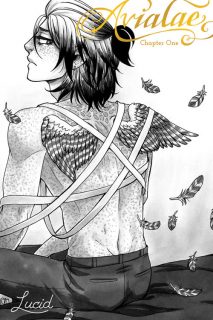 Avialae, Chapters 1-2 by Lucid. Every once in a while, I pick up a comic knowing nothing about it other than the fact that I really like the cover art. That’s how I came to find out about Avialae–I saw the first chapter at the Toronto Comics Arts Festival in 2016 and had to read it. Avialae is actually a webcomic, the second chapter of which was just recently released in print. The artwork in the series is absolutely gorgeous, easily on par with the cover illustrations, and is able to effectively convey both body horror as well as erotic encounters as demanded by the story. The comic follows Gannet, a gay high school student who suddenly, and quite painfully, grows a pair of wings. Initially his next-door neighbor and classmate Gilbert is the only one who knows about Gannet’s transformation. As a result, their relationship undergoes some significant changes, too, and eventually becomes rather intimate. As far as sex goes, the first chapter is fairly tame while the second is much more explicit, easily earning the comic its 18+ rating. Avialae is marvelously sex-positive, the steamy scenes are entirely consensual, the sex is loving, and there’s plenty of communication between those involved. I find both Gannet and Gilbert to be endearing and I’m enjoying seeing how their relationship develops both physically and emotionally. Actually, all of the characters and their relationships, whether familial, romantic, or platonic, are incredibly well-realized in Avialae. Also, much to my delight and surprise, Avialae includes a transguy and his portrayal is excellent.
Avialae, Chapters 1-2 by Lucid. Every once in a while, I pick up a comic knowing nothing about it other than the fact that I really like the cover art. That’s how I came to find out about Avialae–I saw the first chapter at the Toronto Comics Arts Festival in 2016 and had to read it. Avialae is actually a webcomic, the second chapter of which was just recently released in print. The artwork in the series is absolutely gorgeous, easily on par with the cover illustrations, and is able to effectively convey both body horror as well as erotic encounters as demanded by the story. The comic follows Gannet, a gay high school student who suddenly, and quite painfully, grows a pair of wings. Initially his next-door neighbor and classmate Gilbert is the only one who knows about Gannet’s transformation. As a result, their relationship undergoes some significant changes, too, and eventually becomes rather intimate. As far as sex goes, the first chapter is fairly tame while the second is much more explicit, easily earning the comic its 18+ rating. Avialae is marvelously sex-positive, the steamy scenes are entirely consensual, the sex is loving, and there’s plenty of communication between those involved. I find both Gannet and Gilbert to be endearing and I’m enjoying seeing how their relationship develops both physically and emotionally. Actually, all of the characters and their relationships, whether familial, romantic, or platonic, are incredibly well-realized in Avialae. Also, much to my delight and surprise, Avialae includes a transguy and his portrayal is excellent.
 Complex Age, Volume 2 by Yui Sakuma. The first volume of Complex Age surprised me. Since I don’t have a particular interest in cosplay which is a major part of the manga’s premise, I was completely taken aback by how much I was able to identify with the series and Nagisa, its main character. Complex Age is about cosplay and reading the manga has even been somewhat educational, but to an even greater extent the series is about adult fans who have hobbies that many people feel are more suited to a younger age group. It’s about women in fandom and about keeping up appearances. It’s about finding a balance between work, family and friends, and personal interests and happiness. The first volume of Complex Age also included the Sakuma’s original one-shot manga “Complex Age” which deals with similar themes. It wasn’t initially clear exactly how or if the series would tie into the original. I was very happy to discover in Complex Age, Volume 2 that the one-shot and the series actually are directly related to one another–Sawako (from the one-shot) is in fact Nagisa’s mother. I’m excited to see Sawako’s story explored more in Complex Age. It’s interesting, and in some ways a little heartbreaking, to see the impact her decision to let go of her hobby has had on her life. Now that Nagisa knows more about her mother as a person I wonder how the knowledge of Sawako’s past will influence Nagisa’s own decisions in regards to her pursuit of cosplay. Complex Age continues to surprise and impress me; I’m looking forward to reading more.
Complex Age, Volume 2 by Yui Sakuma. The first volume of Complex Age surprised me. Since I don’t have a particular interest in cosplay which is a major part of the manga’s premise, I was completely taken aback by how much I was able to identify with the series and Nagisa, its main character. Complex Age is about cosplay and reading the manga has even been somewhat educational, but to an even greater extent the series is about adult fans who have hobbies that many people feel are more suited to a younger age group. It’s about women in fandom and about keeping up appearances. It’s about finding a balance between work, family and friends, and personal interests and happiness. The first volume of Complex Age also included the Sakuma’s original one-shot manga “Complex Age” which deals with similar themes. It wasn’t initially clear exactly how or if the series would tie into the original. I was very happy to discover in Complex Age, Volume 2 that the one-shot and the series actually are directly related to one another–Sawako (from the one-shot) is in fact Nagisa’s mother. I’m excited to see Sawako’s story explored more in Complex Age. It’s interesting, and in some ways a little heartbreaking, to see the impact her decision to let go of her hobby has had on her life. Now that Nagisa knows more about her mother as a person I wonder how the knowledge of Sawako’s past will influence Nagisa’s own decisions in regards to her pursuit of cosplay. Complex Age continues to surprise and impress me; I’m looking forward to reading more.
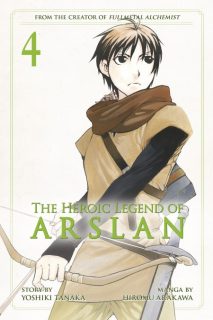 The Heroic Legend of Arslan, Volumes 4-5 by Hiromu Arakawa. Neither the characters or the story of The Heroic Legend of Arslan are especially nuanced and they come across as fairly standard for the genre, but the series is nevertheless engaging and the battles are exciting. That and I’ll always glad to see more work by Arakawa (and in this case by proxy Yoshiki Tanaka) available in English. At this point in the series, Arslan and his small group of allies are fighting for their lives as they try to reach what remains of the Parsian forces along the border hoping to find reinforcements. They must face the Lusitanian invaders, confront Parsians with dubious loyalties, and contend with unknown powers working against them from the shadows. Not only that, the legitimacy of Arslan’s claim to the throne has been called into question. I enjoy historical fantasies which incorporate court and political intrigue, and The Heroic Legend of Arslan certainly has plenty of that. The forces of both Pars and Lusitania are fragmented and suffer from betrayals and infighting. The chaos this causes makes the situation increasingly dangerous and unpredictable; it is difficult know exactly what will happen next as alliances are made only to fall apart again. The Heroic Legend of Arslan can actually be pretty brutal–death, whether from battle or assassination, is a frequent occurrence. Arakawa’s artwork, while not being overly grotesque or gruesome, does still show enough blood carnage that there’s no question as to what is happening. The horses have a very rough time of it, too.
The Heroic Legend of Arslan, Volumes 4-5 by Hiromu Arakawa. Neither the characters or the story of The Heroic Legend of Arslan are especially nuanced and they come across as fairly standard for the genre, but the series is nevertheless engaging and the battles are exciting. That and I’ll always glad to see more work by Arakawa (and in this case by proxy Yoshiki Tanaka) available in English. At this point in the series, Arslan and his small group of allies are fighting for their lives as they try to reach what remains of the Parsian forces along the border hoping to find reinforcements. They must face the Lusitanian invaders, confront Parsians with dubious loyalties, and contend with unknown powers working against them from the shadows. Not only that, the legitimacy of Arslan’s claim to the throne has been called into question. I enjoy historical fantasies which incorporate court and political intrigue, and The Heroic Legend of Arslan certainly has plenty of that. The forces of both Pars and Lusitania are fragmented and suffer from betrayals and infighting. The chaos this causes makes the situation increasingly dangerous and unpredictable; it is difficult know exactly what will happen next as alliances are made only to fall apart again. The Heroic Legend of Arslan can actually be pretty brutal–death, whether from battle or assassination, is a frequent occurrence. Arakawa’s artwork, while not being overly grotesque or gruesome, does still show enough blood carnage that there’s no question as to what is happening. The horses have a very rough time of it, too.

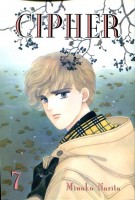
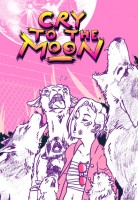
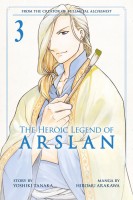

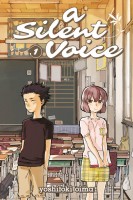
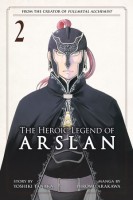
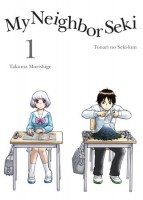

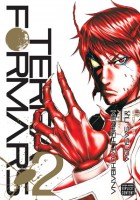
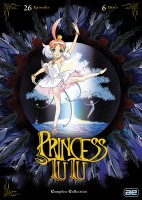 Princess Tutu directed by Junichi Sato. I picked up Princess Tutu more on a whim than anything else when I saw it on super sale. Although I vaguely remembered hearing good things about the anime, I honestly didn’t know much about the series. I’m very glad that I own it because Princess Tutu is marvelous. I do find it somewhat difficult to describe in a way that does the justice, though. The story follows a girl called Duck who really is a duck. She’s under an enchantment that allows her to not only take human form but to also become the magical Princess Tutu. Through the power of her dance she restores the shattered heart of a prince who had sacrificed himself to save others. That all might sound a little strange, and parts of the anime are admittedly weird, but the series is also very good. Stories are just as real as reality in Princess Tutu, and just as potent if not more so. Bits and pieces of classic ballets, operas, and plays can be found throughout the series all mixed together to form a unique work. I absolutely loved the anime’s use of orchestral works not just as background music but as meaningful additions to the story, emphasizing the significance of the characters and of their actions and, for those who are familiar with the pieces, even revealing some of the plot.
Princess Tutu directed by Junichi Sato. I picked up Princess Tutu more on a whim than anything else when I saw it on super sale. Although I vaguely remembered hearing good things about the anime, I honestly didn’t know much about the series. I’m very glad that I own it because Princess Tutu is marvelous. I do find it somewhat difficult to describe in a way that does the justice, though. The story follows a girl called Duck who really is a duck. She’s under an enchantment that allows her to not only take human form but to also become the magical Princess Tutu. Through the power of her dance she restores the shattered heart of a prince who had sacrificed himself to save others. That all might sound a little strange, and parts of the anime are admittedly weird, but the series is also very good. Stories are just as real as reality in Princess Tutu, and just as potent if not more so. Bits and pieces of classic ballets, operas, and plays can be found throughout the series all mixed together to form a unique work. I absolutely loved the anime’s use of orchestral works not just as background music but as meaningful additions to the story, emphasizing the significance of the characters and of their actions and, for those who are familiar with the pieces, even revealing some of the plot.